
SolarDuck Achieves ISO 9001 Certification
SolarDuck, who specializes in offshore floating solar energy solutions, announced that it has achieved ISO 9001 certification, the world’s leading standard for quality management systems. The ISO 9001 certification awarded by Bureau Veritas is another step in SolarDuck’s ongoing journey of aiming for operational excellence. It follows the company’s recent recognition through the EcoVadis certification, underscoring SolarDuck’s focus on both quality and sustainability, including responsible business practices. SolarDuck has received its ISO 9001 and EcoVadis certificatio
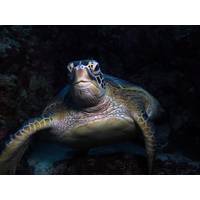
Carbon Dumping
an expensive distraction that fossil fuel corporations use to greenwash their emissions. “Communities across Australia and the Pacific are experiencing the worsening impacts of the climate crisis. We must invest in the proven climate solutions we have right now — that is renewable wind and solar energy backed by storage.”2024 was the hottest year on record, and similar climate concerns are being voiced around the world. This week, Alice Harrison, Head of Fossil Fuels Campaigning at Global Witness, directed her LinkedIn post about the DearTomorrow project to the CEOs of Exxon, Shell, BP
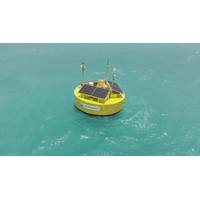
Brazil-Made FLiDAR Tech for Offshore Wind Set for $10M Investment Boost
humidity, including oceanographic variables like waves and sea currents.All that data is essential to determine the potential of a wind energy production area. The equipment weighs seven tons, measures four meters in diameter and four meters in height, and has an energy system powered by photovoltaic solar energy modules."It's another vital step in our energy transition journey. This project phase is necessary to validate the technology and prompt Brazil's biggest offshore wind mapping campaign, which is vital to assess the technical feasibility of future offshore wind energy facilities,"

Unlocking Ocean Power: $3.6M for Community-centric Wave Energy Converters
along mainland U.S. coasts to keep the lights on in 130 million homes, or meet 35% of the country’s electricity demand, without any direct greenhouse gas emissions, according to the National Renewable Energy Laboratory.Despite its promise, wave energy still can’t compete with wind and solar energy in today’s market because engineers haven’t settled on the best way to harvest it or assess the technology.“Everybody knows what a wind turbine looks like because the research community has rallied behind a single idea,” said Jeff Scruggs, U-M professor of civil and environmenta
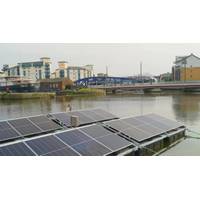
Nova Innovation's Floating Solar Technology Powers Forth Ports' HQ
industry, as well as supporting our commitment to carbon neutrality by 2032 and achieving Net Zero carbon emissions by 2042.”Simon Forrest, CEO of Nova Innovation adds: “With water covering two thirds of the planet, floating solar technology offers a promising means of harnessing abundant solar energy while preserving valuable land space. We are delighted to have deployed the first floating solar demonstrator at Forth Ports and are already working on larger installations.”According to Nova Innovation, the potential for floating solar is huge."With the collective vision firmly fixed

Saildrone Unveils New Acoustic Capabilities to Protect Marine Mammals
technological advancement Saildrone brings to the offshore wind industry. The company provides the critical ocean data needed to support the entire life cycle of an offshore wind farm, from site assessment and development to construction and operation. Saildrone USVs, powered by renewable wind and solar energy with a minimal or zero operational carbon footprint, provide high-resolution ocean mapping, persistent year-round ecosystem monitoring, and maritime security solutions.By providing accurate and timely information, Saildrone enables developers and operators to make informed decisions that prioritize
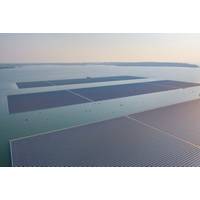
How Floating Solar Panels Could Power Future Population Hotspots
Vast arrays of solar panels floating on calm seas near the Equator could provide effectively unlimited solar energy to densely populated countries in Southeast Asia and West Africa.Our new research shows offshore solar in Indonesia alone could generate about 35,000 terawatt-hours (TWh) of solar energy a year, which is similar to current global electricity production (30,000TWh per year).And while most of the world’s oceans experience storms, some regions at the Equator are relatively still and peaceful. So relatively inexpensive engineering structures could suffice to protect offshore floating
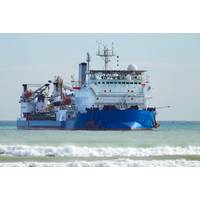
Israel to Build Subsea Electric Cable with Possible Europe Link
Israel on Tuesday unveiled plans to build an underwater electric cable that will run along its Mediterranean coast and offer the possibility to connect to electricity grids in Europe.The proposed 150 km (93 mile) cable will carry electricity from solar energy farms in Israel's southern Negev desert to cities to the center and north, the Energy Ministry said. Also in the works is a link to networks across the sea in Cyprus and Greece.Israel's national planning and building council has started to advance the plan, the ministry said.Energy Minister Israel Katz said the project is part of a

ABS Grants AIP for Saildrone Uncrewed Surface Vehicles
the Voyager and Surveyor ocean data collection platforms. The AIP is an important step to class for Saildrone’s vehicles.Alameda, Calif. based Saildrone provides ocean data using uncrewed vehicles, with nearly 25,000 days at sea and nearly 1,000,000 miles sailed. Primarily powered by wind and solar energy, Saildrone’s Voyager and Surveyor USVs are an environmentally friendly, cost-efficient solution for persistent data collection above and below the sea surface.Saildrone founder and CEO Richard Jenkins said, “Saildrone is proud to be the first to receive an AIP certificate for a 10-meter


 February 2025
February 2025





